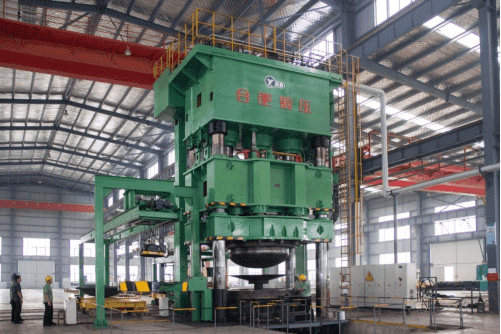Introduction: Forging presses are essential machines used in the manufacturing industry to shape and form metal through the application of force. These presses play a crucial role in the forging process by exerting pressure on the workpiece to deform it into the desired shape. In this article, we will explore the three main types of forging presses: mechanical presses, hydraulic presses, and screw presses, highlighting their features, advantages, and applications.
- Mechanical Presses: Mechanical presses are powered by a motor connected to a flywheel that stores energy. When activated, the flywheel releases stored energy, which drives the ram (upper die) downward to apply force on the workpiece. Key features of mechanical presses include:
- High Speed: Mechanical presses operate at high speeds, which makes them suitable for high-volume production.
- Precision Control: These presses offer precise control over the force applied, allowing for accurate shaping of intricate parts.
- Versatility: Mechanical presses can be used for various forging processes, including open die forging and closed die forging.

Applications: Mechanical presses are commonly used in industries such as automotive, aerospace, and consumer goods manufacturing to produce components like gears, bolts, and fasteners.
- Hydraulic Presses: Hydraulic presses use hydraulic cylinders to generate and control the force applied to the workpiece. The hydraulic fluid is pumped into the cylinders, creating pressure that moves the ram downward. Key features of hydraulic presses include:
- High Force: Hydraulic presses can generate high levels of force, making them suitable for heavy-duty forging operations.
- Adjustable Pressure: The pressure applied by hydraulic presses can be easily adjusted, allowing for flexibility in shaping different types of metals.
- Safety: Hydraulic presses incorporate safety features, such as overload protection and emergency stop buttons, ensuring operator safety during operation.
Applications: Hydraulic presses are widely used in industries such as automotive, aerospace, and oil and gas to produce components like crankshafts, connecting rods, and valves.
- Screw Presses: Screw presses utilize a flywheel-driven screw mechanism to apply force on the workpiece. As the flywheel rotates, the screw moves downward, exerting pressure on the material. Key features of screw presses include:
- Slow Speed: Screw presses operate at slower speeds compared to mechanical presses, making them suitable for precision forging.
- Energy Efficiency: These presses consume less energy due to their slow operation, resulting in cost savings.
- High Control: Screw presses offer precise control over the forging process, allowing for accurate shaping and minimizing material waste.
Applications: Screw presses are commonly used in industries such as aerospace, defense, and specialized tool manufacturing to produce components with high precision and intricate shapes.
Conclusion: Mechanical presses, hydraulic presses, and screw presses are the three main types of forging presses used in the manufacturing industry. Each type has its unique features, advantages, and applications. Understanding their capabilities can help businesses choose the most suitable forging press for their specific requirements, ensuring efficient and high-quality production processes.

